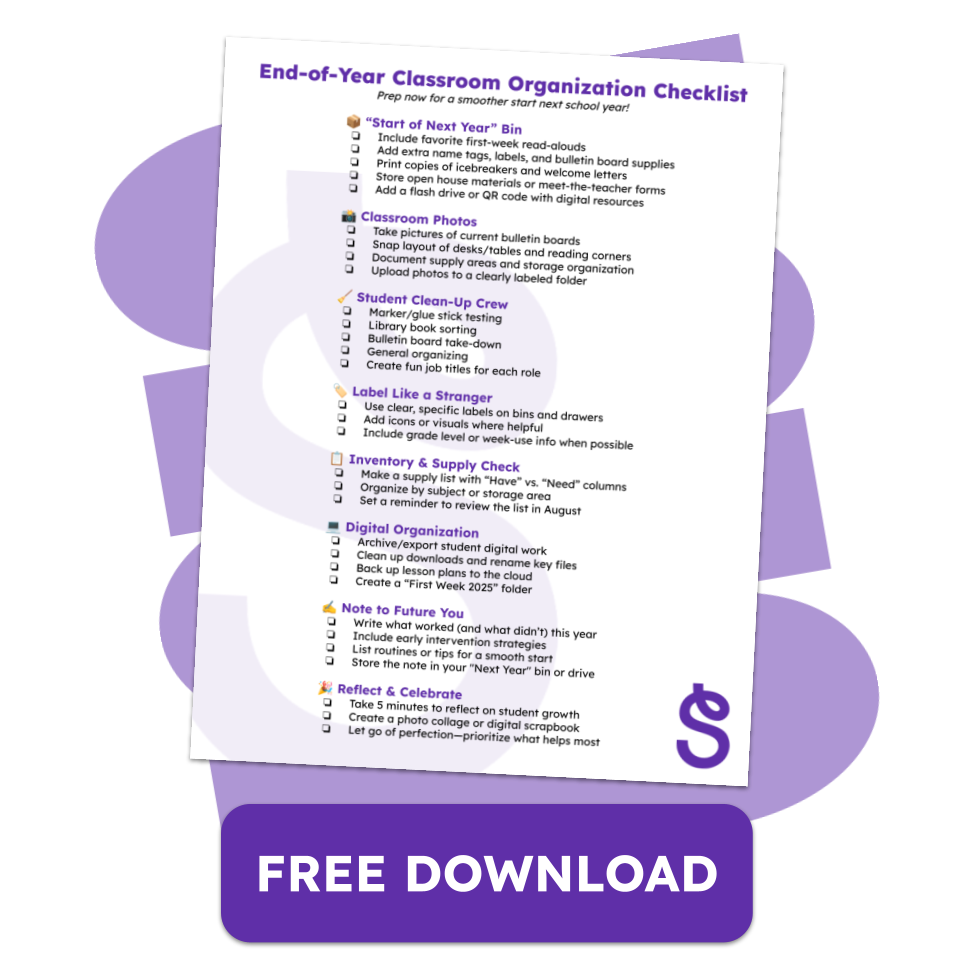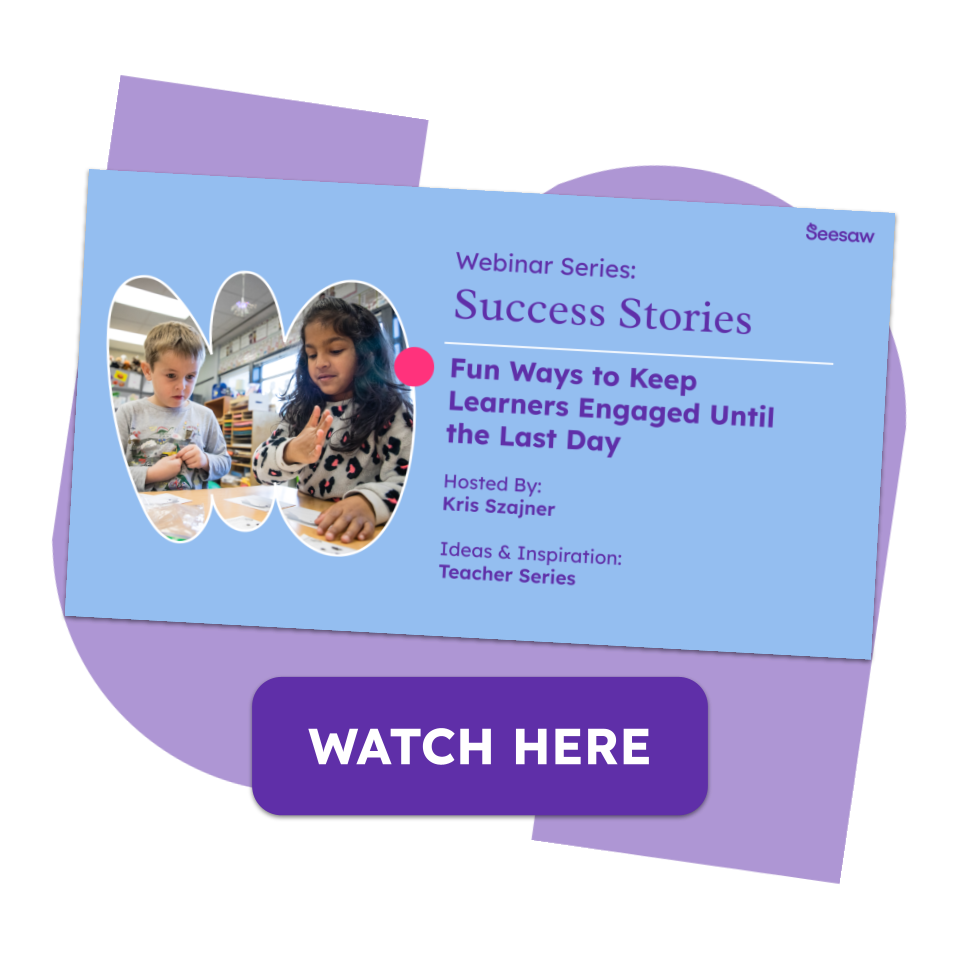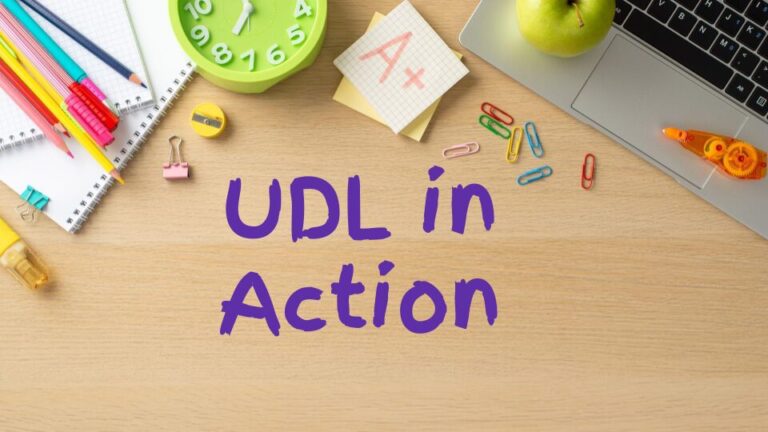Summer is approaching! As the end of the school year approaches, your classroom may look a little worse for wear that usual. Marker caps are gone, supply bins are disorganized, and student work covers every inch of your walls. Before you power down for a well-deserved summer break, we want to share some classroom hacks that will save you time and thinking power in August.
1. Create a “start of next year” bin
Designate one bin or drawer as your “Start of Next Year” toolkit. Include:
- Your favorite read-alouds for the first week
- Extra name tags, labels, and bulletin board borders
- Copies of first-day icebreakers
- Welcome letters or open house materials
- Using Seesaw’s classroom toolkit, you can easily store templates, activities, and student work for a smoother start to the year.
Come August, this bin will feel like a gift from Past You.
2. Take photos of wall displays & layouts
 Snap pictures of your classroom before taking anything down:
Snap pictures of your classroom before taking anything down:
- Bulletin boards
- Supply areas
- Student work displays
- Desk or table configurations
- Consider archiving your student work and classroom setups in Seesaw to make back-to-school planning easier.
Next fall, you’ll have a visual roadmap for what worked (and what didn’t).
3. Get your “clean-up crew” moving
Students love responsibility, especially when it feels important. Create small jobs and assign students to:
- Check, test and sort markers or glue sticks
- Clean up broken or old supplies
- Organize library bins
- Sort lost-and-found items
Add fun job titles like “Librarian,” “Supply Ninja,” or “Staple Remover Extraordinaire” and give these out with a fun randomizer to keep spirits high.
4. Label everything like you’re a stranger
This might sound silly but summer is a long time, you may forget. Use clear, descriptive labels with both words and visuals, especially if you move rooms or share materials with teammates. Labels that are helpful include:
- Clear time of year when this was helpful
- Subjects connected with what is inside
- How you used the supplies in the box
5. Inventory now, shop later
Use a simple checklist (paper or digital) to take inventory of what’s running low before you pack up. Bonus points for grouping it by subject area or drawer/bin. In August, you’ll shop smarter, not harder.
Try this format:
| Item | Have | Need | Notes |
| Dry Erase Markers | 10 | 20 | Need more fine-tip colors |
6. Prep your tech & digital files
- Archive or export student digital work you want to save
- Rename folders and clear out downloads
- Back up key documents to a cloud drive
- Make a folder titled “First Week 2025” and drop in lessons, Seesaw activities, or slides you want to reuse
Your digital self will thank you next year.
 7. Leave a note for future you
7. Leave a note for future you
Write a quick letter or checklist to your future self:
- What routines worked?
- What would you skip next year?
- Which students needed extra support early on?
- What made the first month smoother?
Tape it inside your “Start of Next Year” bin or store it digitally where you’ll find it in August.
8. Celebrate the progress—then let go
Take time to reflect on what you and your students accomplished this year. Consider creating a digital scrapbook or highlight reel. And then, breathe. Not everything needs to be perfectly sorted, just set up enough for a calmer start next time.
Final thought:
The end of the year can feel overwhelming, but a few strategic choices now can mean a smoother, more energized return. Use these classroom hacks that will save you time and thinking power to finish strong, and leverage Seesaw for end-of-year classroom organization and digital preparation for the next school year. You’ve earned your break, so go enjoy it!




